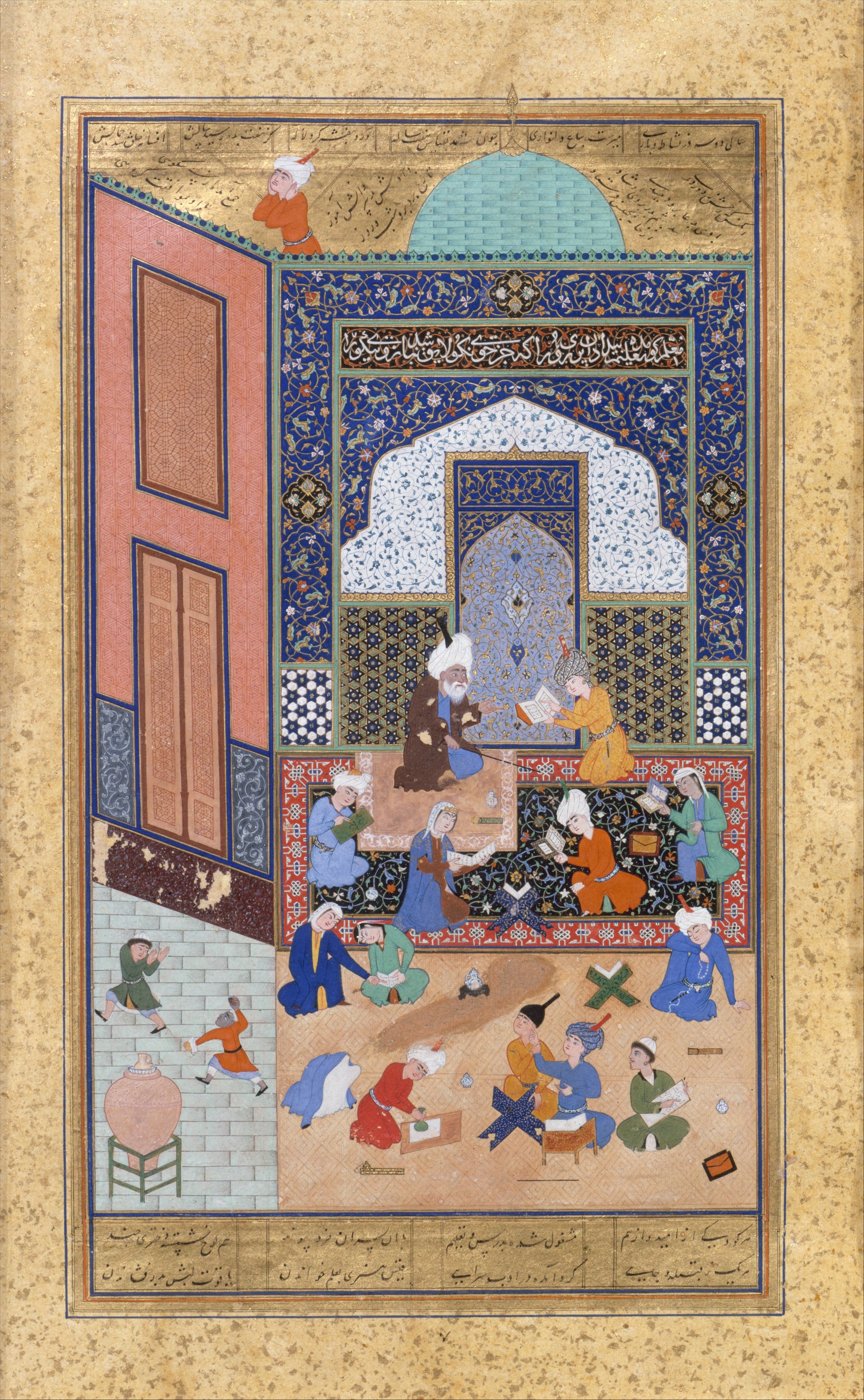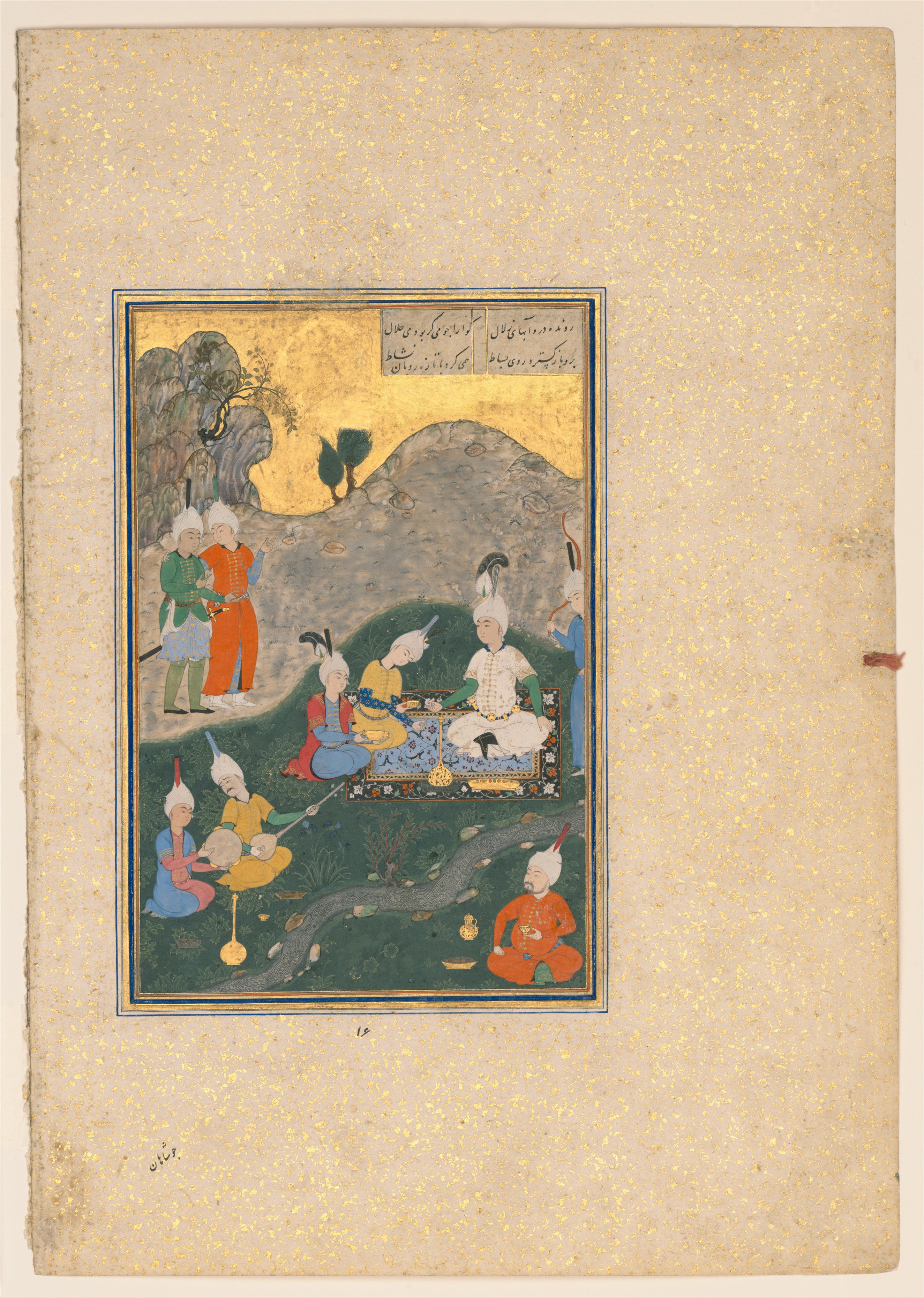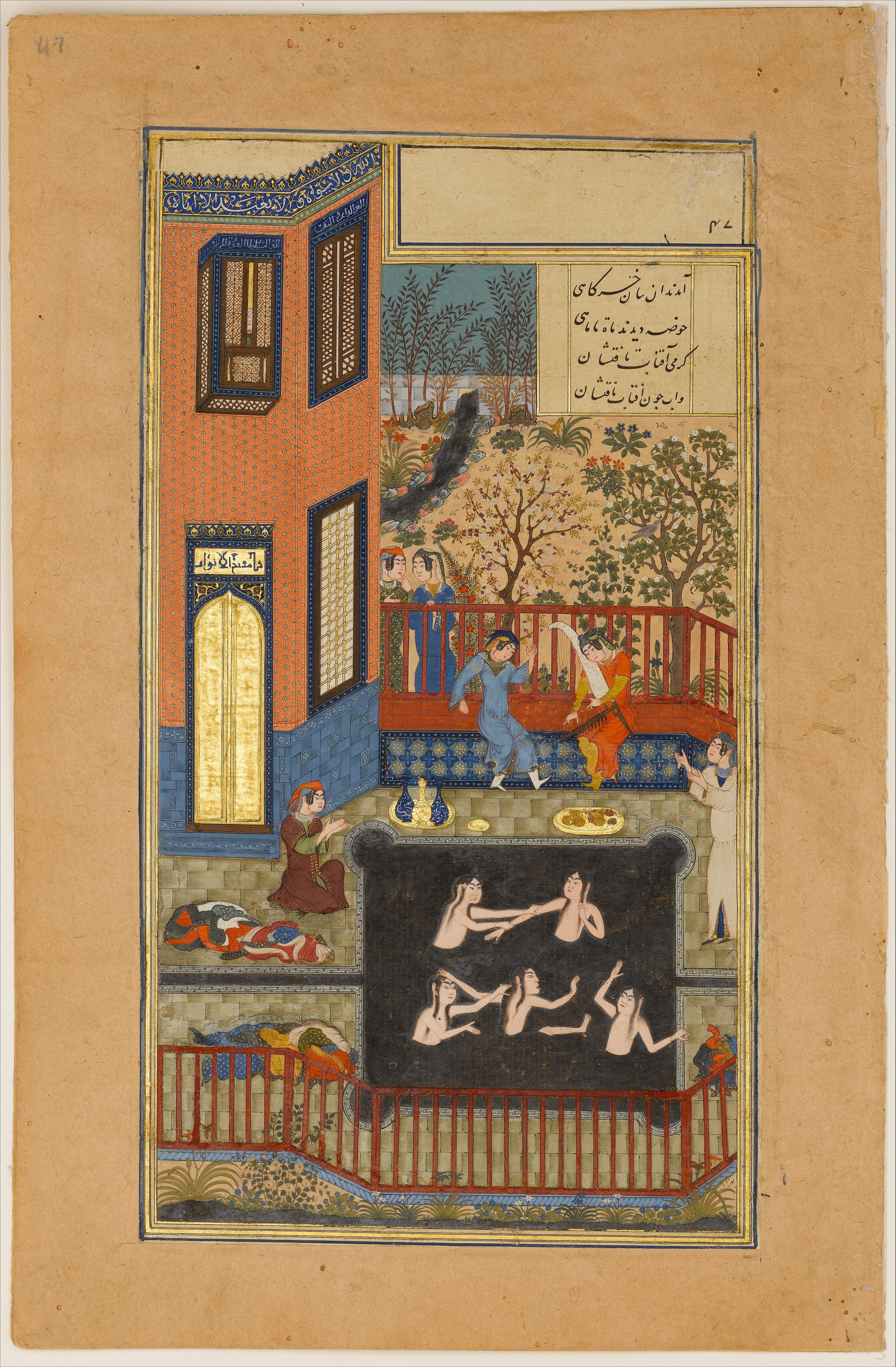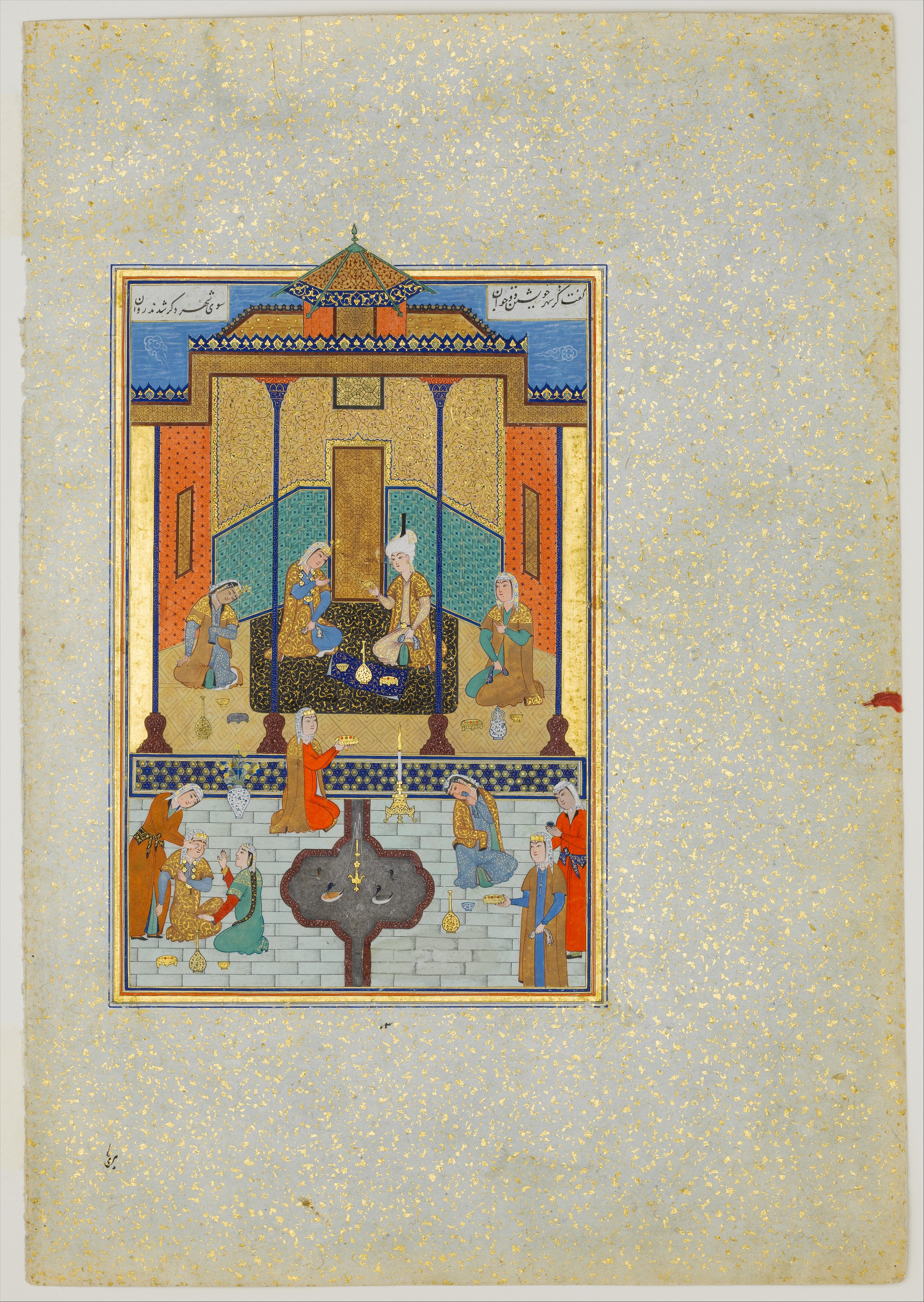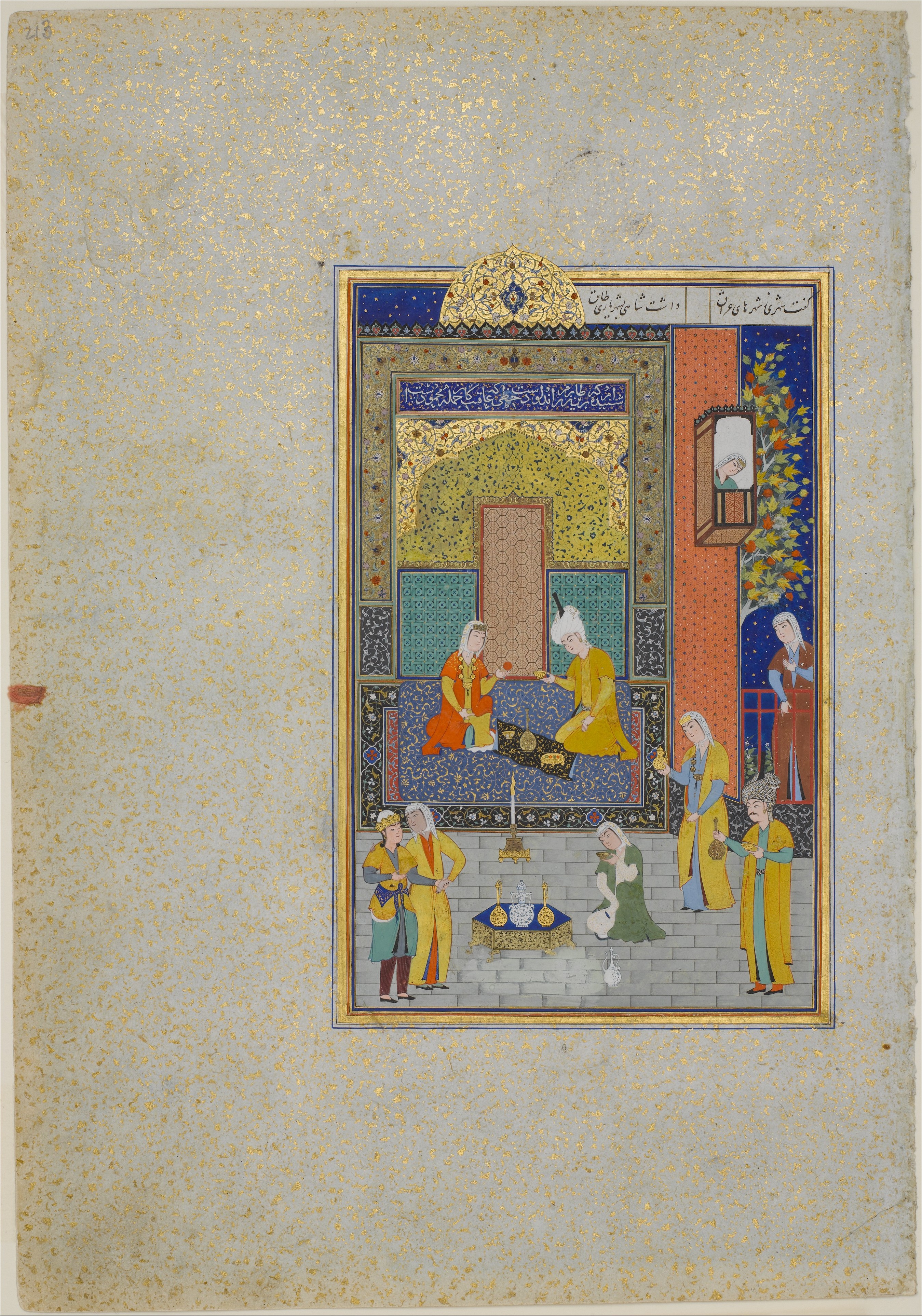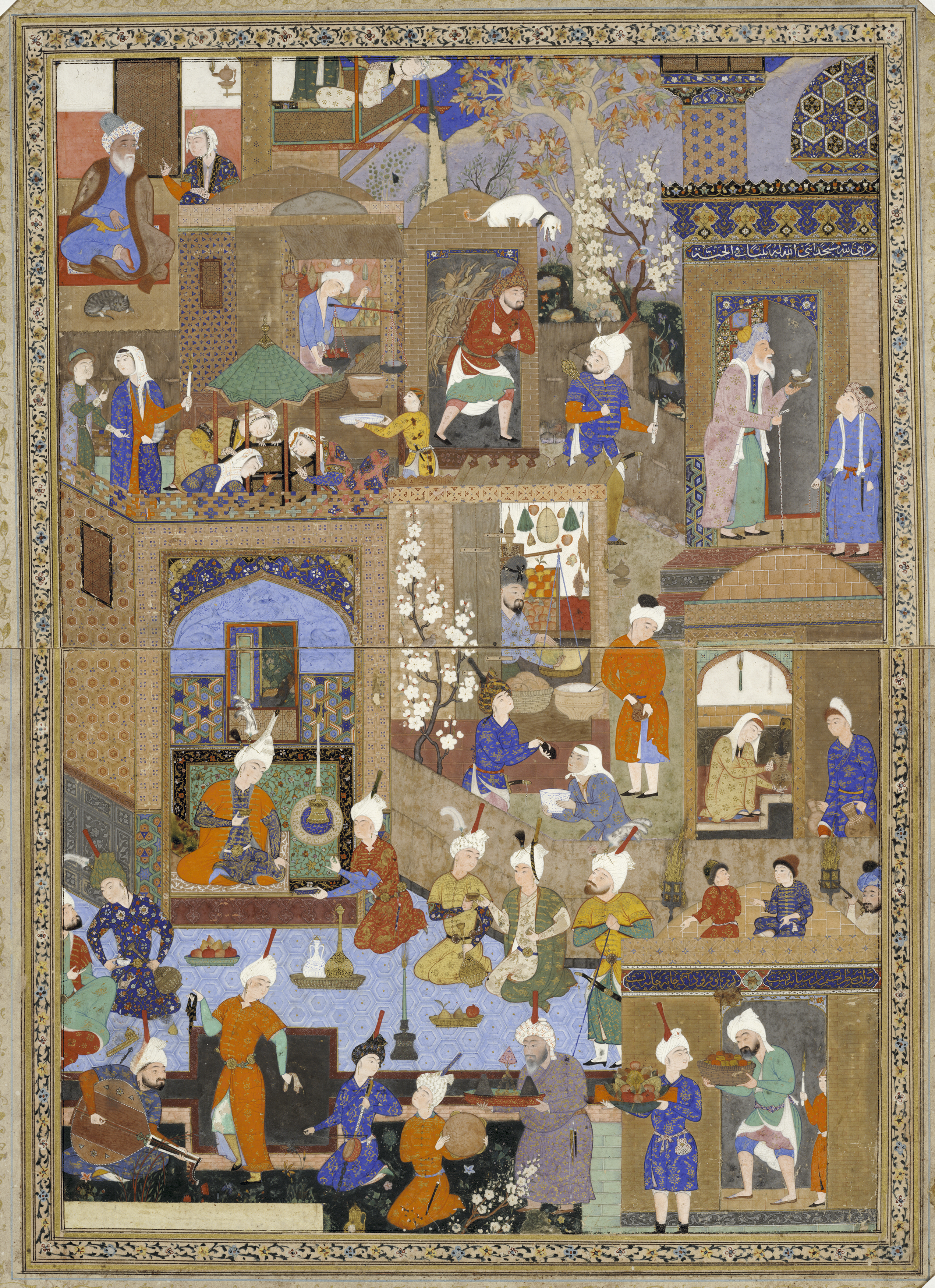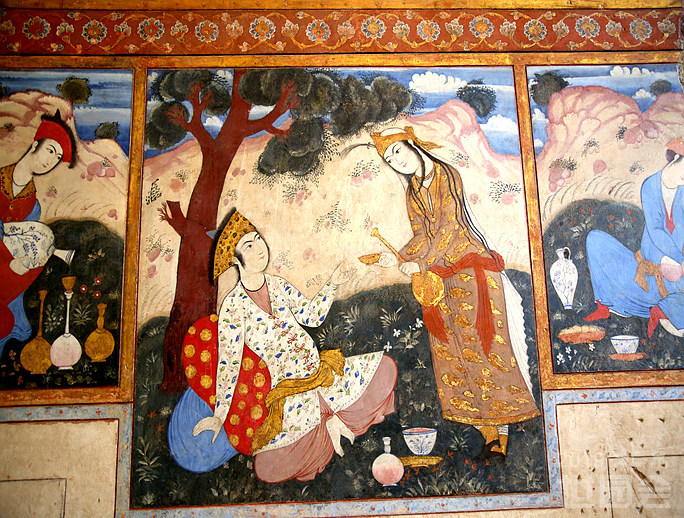日志
细密画中的青花瓷
热度 15 |
2021-2-19
有人考证说,波斯、印度和伊斯兰细密画的形成,主要是受到了中国工笔画的影响,是十三世纪初期的蒙古大军先将中国的宫廷画院体制、汉红颜料及两宋宫廷画风带到元帝国治下的波斯, 才创立了细密画这种艺术形式,用以记载蒙古大军所向披靡战无不胜攻无不克的特殊历史场景和中东伊斯兰世界的世俗民风和社会百态。
- The traumatic Mongol invasion of 1219 onwards established the Ilkhanate as a branch of the Mongol Empire, and despite the huge destruction of life and property, the new court had a galvanising effect on book painting, importing many Chinese works and probably artists, with their long-established tradition of narrative painting. The Ilkhanids continued to migrate between summer and winter quarters, which together with other travels for war, hunting and administration, made the portable form of the illustrated book the most suitable vehicle for painting, as it also was for mobile European medieval rulers.
成吉思汗和他的四个儿子 - 现藏大英图书馆。Genghis Khan with sons Ogodei and Jochi seated to his left
说者无意,听者有心。蒙古大军所到之处,大肆掠夺,也从伊斯兰世界带回中国青花瓷生产所必须的颜料苏麻沥青,于是为贵族服务的伊斯兰的细密画也于无形之中,记载了中国景德镇的青花瓷,在中东、印度和伊斯兰世界里的反向传播。
成吉思汗的第三个儿子元太宗窝阔台(Ogodei,1186—1241年),又作斡歌歹,谔格德依等,是蒙古国第二大汗,攻宋灭金,横扫欧洲,可是晚年嗜酒如命。
在大英博物馆里,也有多幅帖木儿王朝时期的细密画:
元定宗贵由(Kuyuk,1206-1248年),是成吉思汗的孙子,窝阔台的长子和元世祖忽必烈的堂兄,因为他母后摄政的关系继承了汗位,但只在汗位两年,便撒手不干了。
- Detached manuscript page from the Ta'rikh-i Jahan-Gushay of ʿAta Malik ibn Muhammad Juvayni. Image depicts 'Kuyuk the Great Khan', the grandson of the great Gengis Khan (Chinghiz), during his moment of enthronment, with courtiers and attendants surrounding him. This event took place at his camp near Qaraqorum. Kuyuk sits on a gold throne and felt blanket, sipping from a ceramic cup. To the left two men kneel on a blanket (eyes lowered), while a bearded man strums a typical Persian rabab below. In the centre a kneeled man offers Kuyuk a gift. This entire scene occurs under an open tent and upon a green hill ornamented with folliage. A line of text appears at the very bottom of the image. Painted in opaque watercolour, gold leaf, and ink on paper.
- Kuyuk, the grandson of Chinghiz (Genghis) Khan, was the third Great Khan of the Mongols. He was enthroned at his camp naer Qaraqorum in 1246 and ruled Mongolia and Northern China until 1248. Here he is depicted receiving gifts from his nobles. despite its brilliant colours, this illustration exhibits an irrational sense of spatial relationships. The rug at the left overlaps a cypress tree which in turn is obscured by a flowering tree, leaves from the tree at the right, a cloud and the canopy above Kuyuk. The result is a confused area of the painting rather than a clear recession in space.
元朝附属国四大汗国之一的伊尔汗国(Ilkhanate,1256-1357年)的蒙古可汗完者都(Uljaytu, the Il-Khanid ruler of Iran, 1304-1316),接见来自元朝的两位中国使者李达志(Li-ta-chih)和马可逊(Maksun)。完者都又作完者拔都、合儿班答,是元世祖忽必烈汉的侄子阿鲁浑汗的第三个儿子,也是伊儿汗国的第八任君主。阿鲁浑的父亲旭烈兀(1218年-1265年2月8日)攻陷巴格达,灭了大食国,是伊儿汗国的建立者和西南亚的征服者。1304年5月17日,完者都的哥哥合赞去世,完者都继承王位,于1304年7月21日-1316年12月16日在位。
- Detached manuscript page. Literature from the Majma`a al-Tavarikh of Hafiz-i Abru. Two Chinese sages, Li-ta-chih and Maksun, presenting books on history to Uljaytu, the Il-Khanid ruler of Iran (1304-1316, or possibly Gházán Xán). On paper. The sages of China bringing books to Uljaytu From the Majma'a al-Tavarikh of Hafiz-i Abru Greater Iran, c. 1425。Opaque watercolour and gold on paper。This page is from a universal history written by the Timurid historian Hafiz-i Abru. It depicts two Chinese sages, Li-ta-chih and Maksun, in the centre left of the scene presenting books on history to Uljaytu (Öljeitü), the Mongol (Il-Khanid) ruler of Iran from 1304-1316, who is seated under the tree. This page is based on a section of the Ilkhanid history, the Jami ºal-tavarikh (Compendium of Chronicles) and is rendered in the plain and rational ‘historical style’ of Shahrukh. Three illustrations from this manuscript are included in 'Princes, Poets & Paladins' (cat.not. 8-10).
15世纪帖木儿王朝时期的两幅细密画插图,绘于伊朗设拉子,该书藏于美国克里兰夫艺术博物馆。表现的是一场宴会,使用的是景德镇生产的青花瓷。其中有三个圆领纱帽的明代使臣,匍匐跪倒在伊斯兰堡的宫殿上。使臣所带纱帽为明代前期特征,圆领除了有胸背外还有膝襕,大概是根据波斯的蒙古系统服饰式样,稍微作了修改。
- Royal Reception in a Landscape, left folio from the double frontispiece of a Shahnama (Book of Kings) of Firdausi (Persian, about 940–1019 or 1025)
- The royal feast is set in a green landscape dotted with flowers and blossoming bushes against a gold sky with wisps of blue and white clouds. The group of figures in the upper left includes a falconer, horses, attendants, and two hunting cheetahs, while servers transport food and drink in gold and ceramic vessels, some presumably Chinese blue and white porcelain. Possibly this banquet was offered after a courtly hunt, a prestigious symbol of power and wealth. Among the groups of men sitting on elaborate carpets are three Chinese officials, identifiable by their black hats, kneeling together on the ground. Although their presence indicates the presence of foreign cultures within the Timurid court, the painting also reveals that not all are welcome to the feast; in the bottom half of the page a guard wields a stick to drive a group of men out of the garden.
伊朗的帖木儿王朝使用的青花瓷器,应该是元青花或明早期青花。
- Royal Reception in a Landscape, right folio from a double-page frontispiece of a Shahnama (Book of Kings) of Firdausi (940–1019 or 1025)
- The painting on the verso of this folio is the first half of a double-page frontispiece now detached from a Shah-nama manuscript (see CMA 1956.10 for the second half of the frontispiece). The scene does not illustrate a narrative from the Shah-nama, but is likely a representation of the courtly audience for whose entertainment the manuscript was created. The date and style of the painting indicate that it was made during the reign of the Timurid dynasty in Shiraz, Iran.
The Court of Pir Bbudaq, Shiraz, Iran circa 1455-60. Painting 7 x 4⅝ in (17.5 x 11.6 cm); folio 15⅜ x 13⅛ in (39 x 34 cm). Sold for £433,875 on 25 April 2013 at Christie’s in London
美国大都会博物馆里的波斯细密画,反映青花瓷当时不但和金银器一起被当做宫廷酒器、茶具、花瓶和陈设器,还被当做洗澡时用的浴器。
- This deluxe manuscript was first copied in Shiraz in 1411 during the governorship of Iskandar Sultan, grandson of Timur and a great patron of the arts, particularly the arts of the book. Spaces for miniatures elsewhere in the volume were left blank and subsequently filled in by Turkman Aq Quyunlu and Ottoman painters, providing a chronicle for the manuscript's travels. The fine nasta'liq is from the hand of a celebrated scribe who was responsible for a number of Shiraz manuscripts dating between 1405 and 1429.
- One of the best-known stories of Nizami’s Khamsa (Quintet) is that of Laila and Majnun, a tale akin to that of the star-crossed lovers Romeo and Juliet. This folio illustrates their meeting at the madrasa (school) where they fall in love at first sight. In addition to the young lovers, this highly detailed painting depicts activities typical of the sixteenthcentury schoolyard—with children burnishing paper, practicing their penmanship, and reading various types of books. Although the story takes place in Arabia, the architectural setting is quintessentially Persian.
- The Khamsa of Nizami, written between 1298 and 1302, is a canonical work of Persian literature. One of the five poems within it tells the story of Alexander the Great, who is identified as the half-brother of the Persian king Darab in various histories. By presenting Alexander in this manner, the audience was able to identify with its ancestors’ conqueror. Although the story took place in the fourth century BC, the objects that appear in this feast (bazm) scene provide an insight into the types of luxury objects and musical instruments that were in use at the time that the manuscript was produced. The figures wear their turbans in the style typical of Safavid Iran, with twelve folds wrapped around a baton to symbolize the twelve Shi’i imams.
- This folio once illustrated a magnificent manuscript of Nizami’s Haft Paikar (Seven Portraits). The story of the Seven Portraits comprises a series of moralizing tales as told to the Persian hero Bahram Gur by seven princesses. This lively and lyrical scene illustrates a story in which a youth spies upon maidens swimming in a garden pool by moonlight. The voyeur is barely visible here, peering out of the shuttered window, unbeknownst to the playful bathers below.
- The Haft Paikar (Seven Portraits) is one of the five poems of the Khamsa of Nizami. The poetry is mystical, illustrating the supremacy of divine love over earthly pleasures. In the story, Bahram Gur marries seven princesses from the seven regions of the world and visits each one in her own pavilion on successive nights. The various elements of this scene are all shown in the perspective that makes them the most easily intelligible. The foreground appears tipped up to emphasize the shape of the fountain, which was painted in silver that has since oxidized, and the polygonal cap dome is shown from a different angle than that of the flat roof on which it sits. Although this manuscript was completed in the early Safavid period, it displays a continuity with the painting styles of Timurid Herat. The artist, Shaikh Zada, was a pupil of the master painter Bihzad.
"Bahram Gur in the Yellow Palace on Sunday", Folio 213 from a Khamsa (Quintet) of Nizami。A.H. 931/A.D. 1524–25
- The fourth of the late twelfth-century Persian poet Nizami's five epic poems, later combined to form the famous Khamsa (Quintet), was the Haft Paikar, or Seven Portraits, so named from one incident in the story. It recounts the legendary history of the Sasanian king Bahram Gur, who is idealized as a great lover and hunter. The story is known also as the Seven Princesses because Bahram Gur, so the story goes, married seven beautiful princesses from the seven regions of the world, and visited each in her own pavilion on successive nights of the week. In this highly sensual but moralistic work, each princess tells a story and there are additional stories within these.
- This scene takes place totally within the pavilion. The attendants, in their relaxed tête-à- tête, pay little attention to the royal couple who seem engrossed with one another. While the text calls for everything to be in red, the artist has used the color to unite the composition.
- The artist has used the color black, which according to the text, should be all-pervasive, with elegant restraint. He has, like a skilled haute-couturier, avoided somberness and set off the black by contrasting it with both bright colors and light shades. Also its use in each costume and in the dome and spandrels of the architecture effectively unifies the composition. The air of courtly leisure in this miniature is particularly apparent.
- The arrangement of this miniature is close to that of Bahram Gur in the black pavilion, in that the building, except for a touch of blue sky here, takes up the entire picture space. In addition, the same two ladies playing musical instruments appear in both compositions in reversed positions. However, there are individual elements in this painting, based on the text of the poem. There Bahram Gur is described as dressing in purest white and wearing a white feather in his turban. The princess is described as having pots of lilies and narcissus at her feet, their white petals not as white as her skin.
- The artist has achieved superb color harmony while still conveying the darkness of the pavilion required by the text. The perfection of such patterns as the tile work, and such details as the trays holding bottles, cups and fruit for the royal pair are characteristic of the supremely high quality of these Herat miniatures.
波士顿美术馆:
伊朗德黑兰国家美术馆:
伊背上面也有的卖,大概两百美金一幅:
一些为国人所熟知的细密画:Persian Miniature Painting Persian King And Queen Handmade Miniature Painting
Saki, album miniature by Reza Abbasi, 1609Complex palace scene, 1539–1543, Mir Sayyid Ali揭开波斯艺术的神秘面纱--细密画托普卡比博物馆中的40件元青花伊朗四十柱宫里的细密画。受中国鬼故事影响的伊朗细密画 - 两鬼图中的一鬼 - 手握一青花宝瓶 - 美国傅里叶博物馆藏品 - Two demons, fettered. Museum: Freer Gallery of Art, Washington, D. C. Timurid period, 15th century.Timurid princes were passionate collectors of Chinese luxury goods, a practice that inspired local artists to experiment with the new styles and motifs found on such imports and to integrate them into their own work. One intriguing and enigmatic series of drawings and paintings that incorporates Chinese pictorial conventions shows monsters and demons (div) in various activities and poses. These wild, highly expressive creatures contrast sharply with the elegant and emotionally reserved men and women typically seen in Timurid paintings and recall Central Asian and Chinese models and techniques. Frequently, the demons appear with familiar objects, as seen in this remarkable tinted drawing. The one on the right, for instance, plays a spiked fiddle (kamancha), a musical instrument that was popular in Iran and Central Asia. His companion holds a gold cup and a Chinese blue-and-white bottle decorated with a writhing dragon. The style and technique of drawing also owes more to Chinese than Persian pictorial conventions. Both ferocious and comical, these fantastic figures are among the most distinct and powerful images created during the fifteenth century.流于世俗宗教和色情传说中的印度细密画 - India, Deccan, Hyderabad; c. 1720-1740。Miniature: 27.6 × 18.4 cm。The miniature’s motif comes from Nizami’s famous romance about Khusraw and Shirin that was written in Iran at the end of the 12th century. This painting, which was never part of a manuscript, was made in Hyderabad, a state that was created in the Deccan in around 1725 after the Mughal Empire had begun to disintegrate. The two protagonists and the slightly smaller minor characters – the men in Persian garb, the women in more Indian attire – were placed in a charming puppet-theater landscape that ranges from apple green to violet, with buildings that are completely out of proportion with their surroundings. The style truly lives up to the slightly eccentric reputation of art from the Deccan.
全部作者的其他最新日志
- • 西方爱情诗选 之 我思故我爱
- • 从文自传 之 湘西儒将
- • 千年世家 之 神仙打架
- • 从文自传 之 杀人
- • 灯下漫笔 之 河南匪气
- • 租界里的杂文 之 募捐
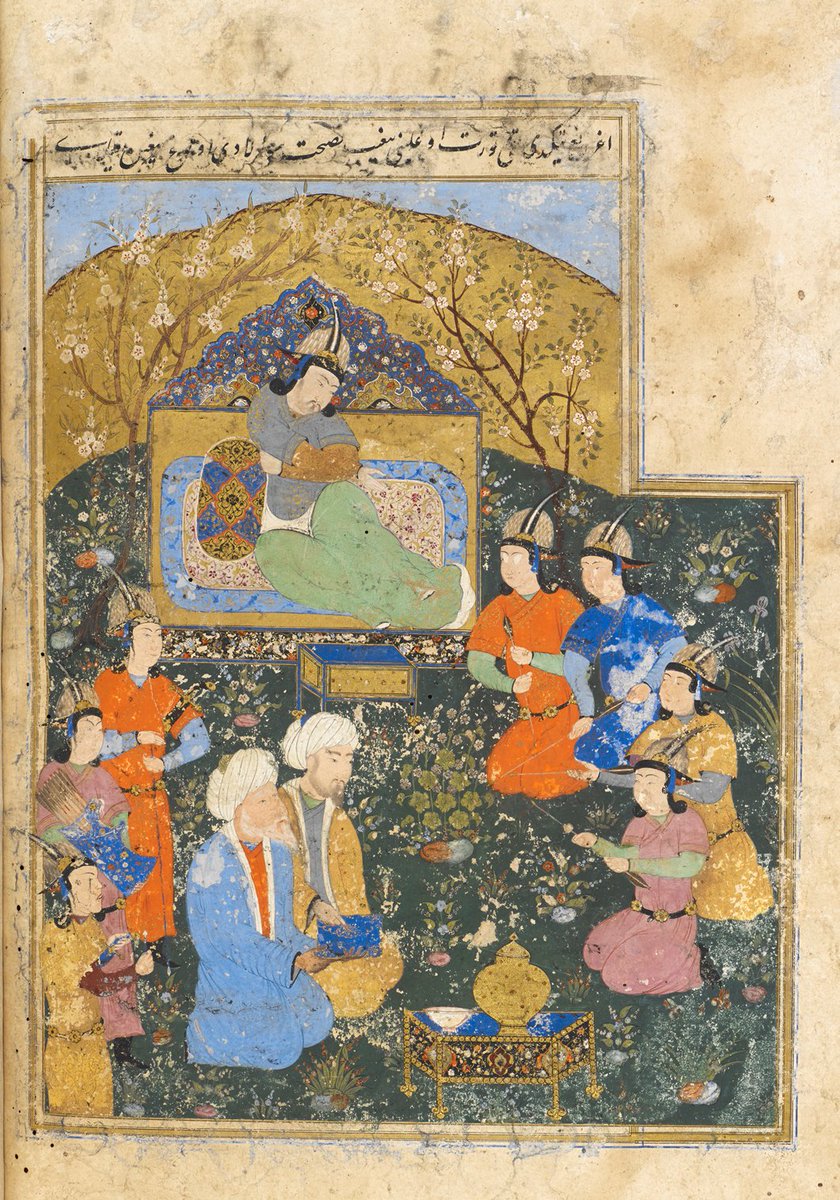

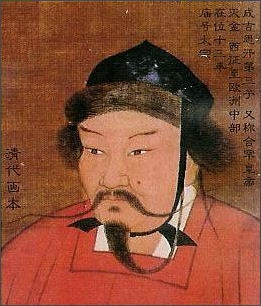
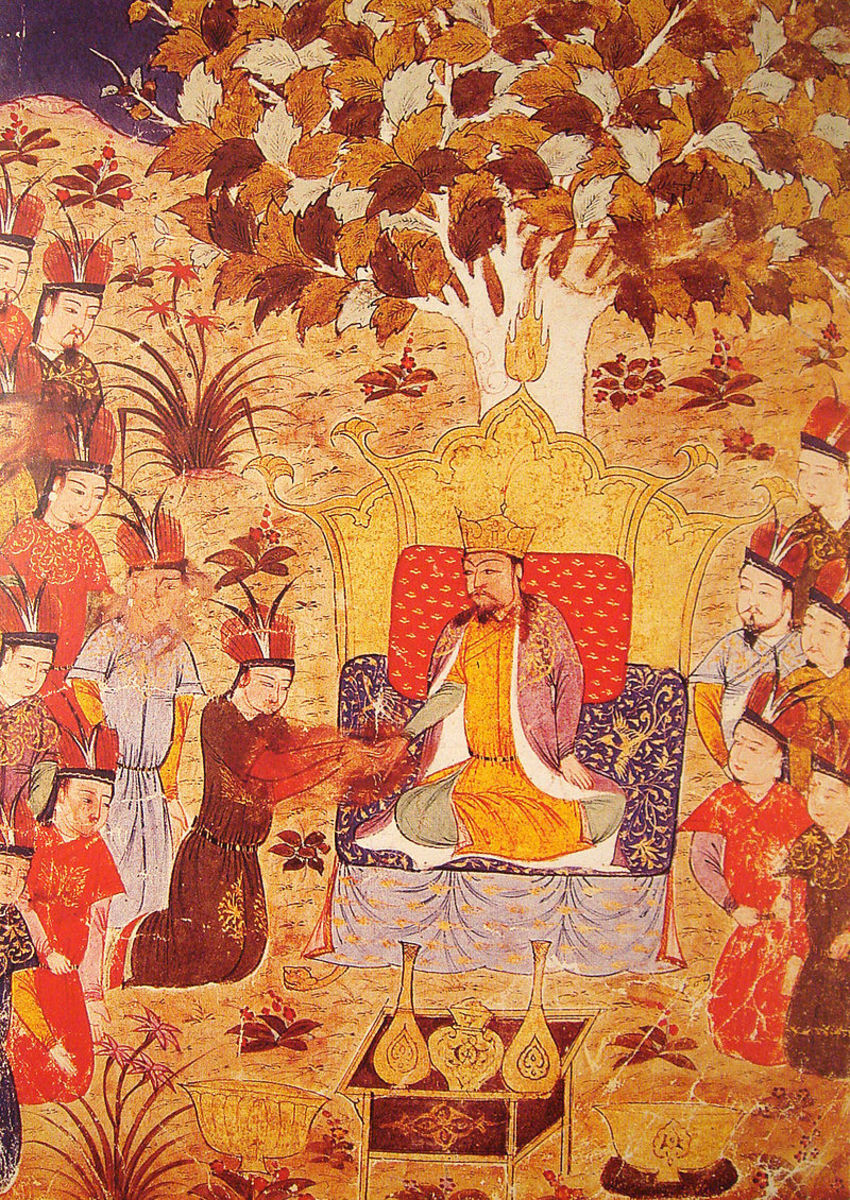





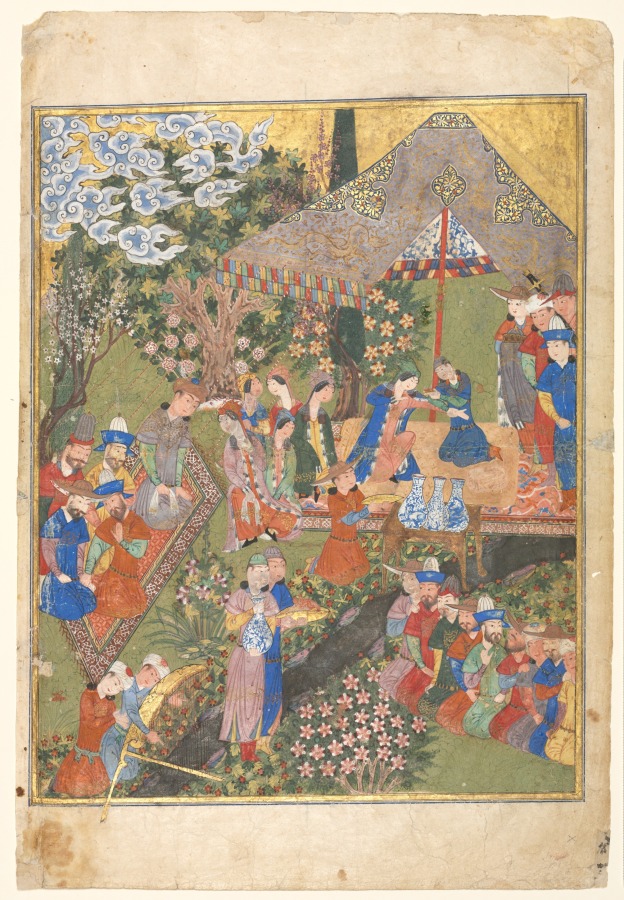
.jpg?mode=max)
